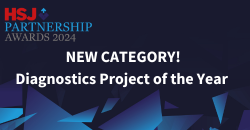How to apply
Entries are now closed
Sir Mike Richards’ 2020 review of diagnostic services recommended new models of care, better equipment, and investment in both workforce and digitisation to improve efficiency, patient experience and clinical outcomes. Since then, significant progress has been made through the advent of imaging and pathology networks, the rise of Community Diagnostic Centres, and significant investment from the centre in upgrading existing technology and infrastructure are all creating opportunities.
Private and third sector organisations have played a crucial role in helping deliver increased capacity, accessibility, and faster turnaround to improve care. This award will therefore recognise projects and partnerships that are tangibly improving diagnostic services at a local, regional or national level. Judges will be particularly interested in projects, improvements and innovations that have been genuinely co-produced by the NHS and private sector. These will have involved close consultation with patients and achieved high levels of staff engagement.
Eligibility
- This award is open to any private or third sector organisation which works in partnership with an NHS organisation or system
- These can be single partnerships or joint working projects, but must demonstrate evidence from the past two years up until the awards deadline date
